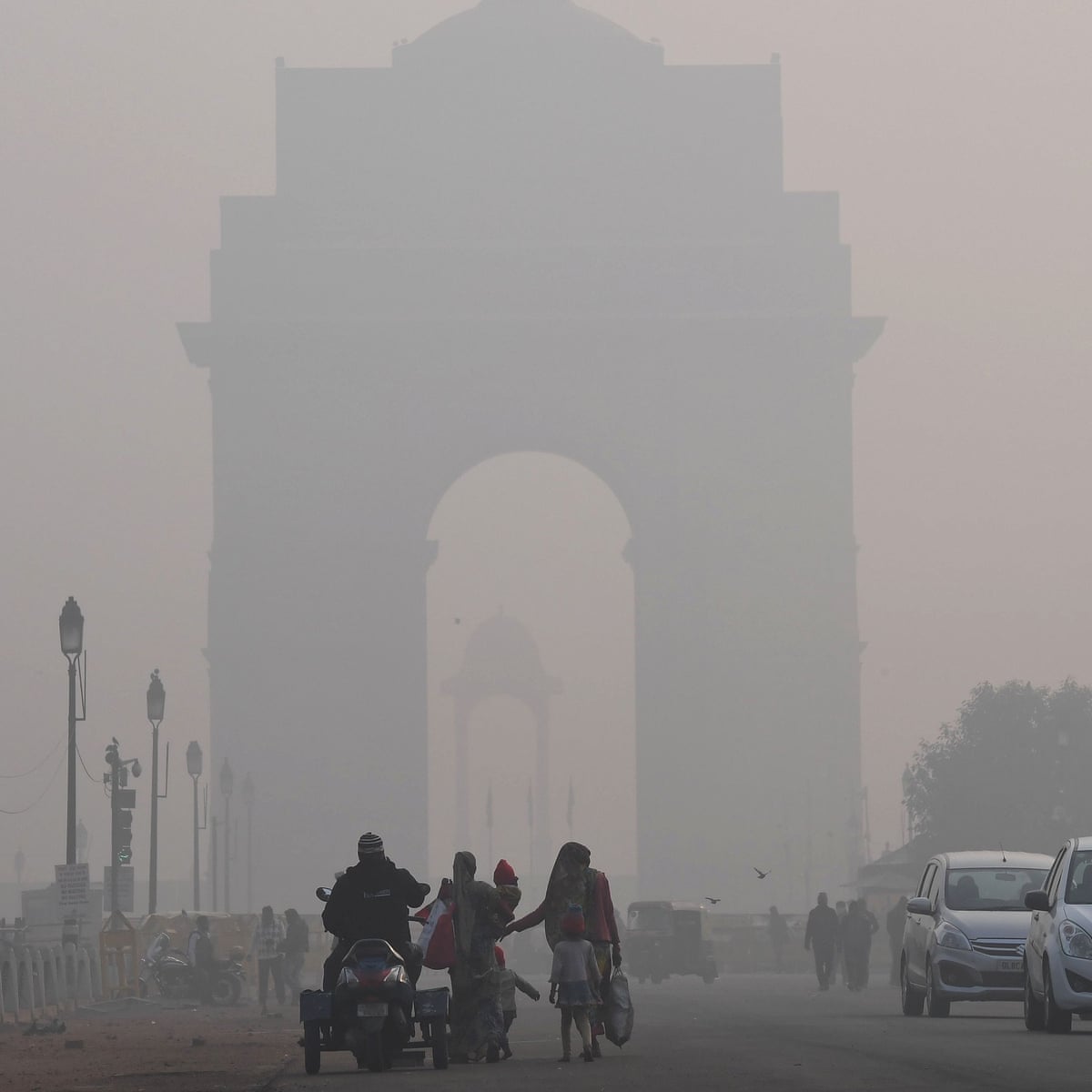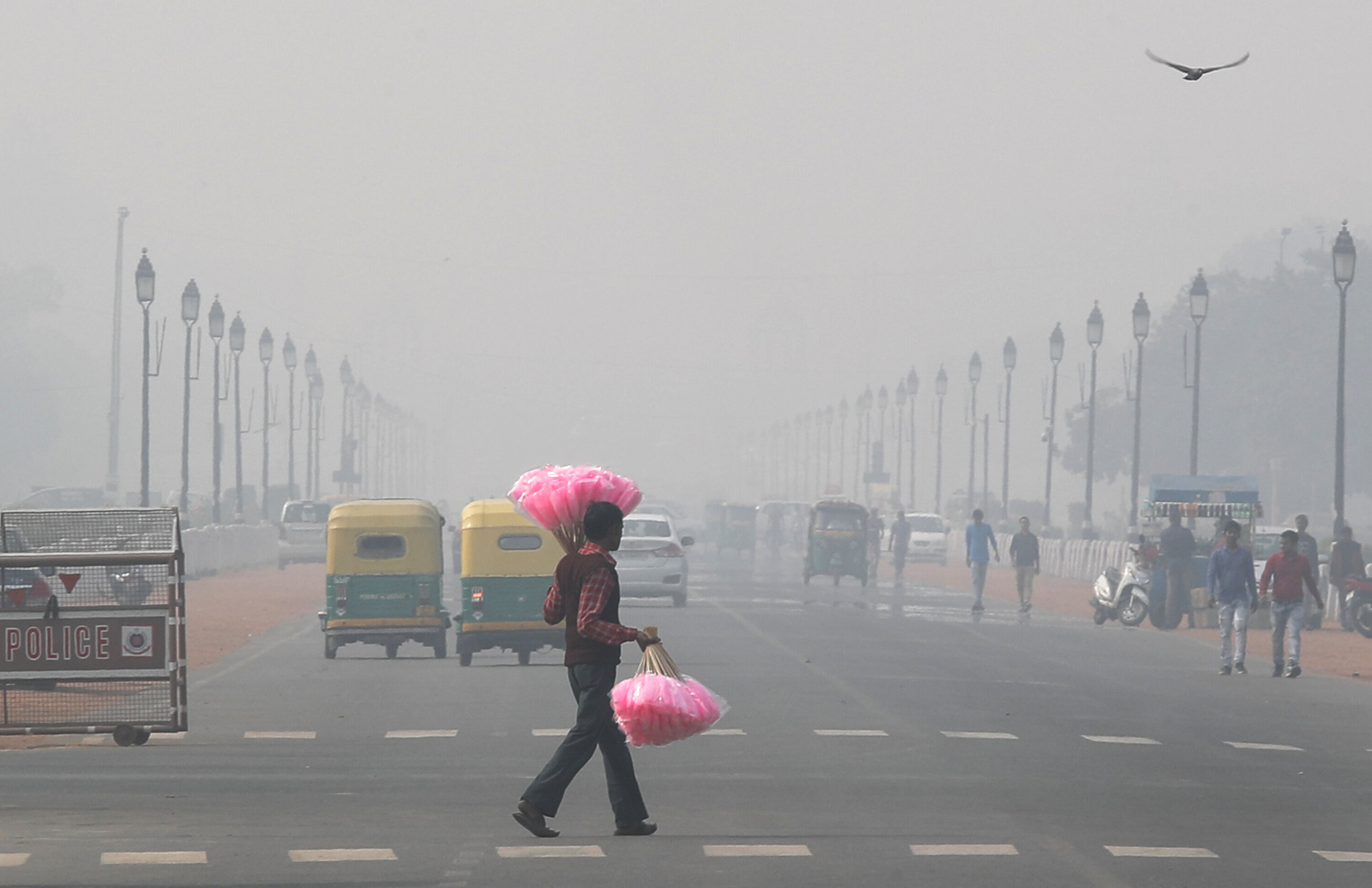Suffocating Smog Shrouds Delhi as Air Quality Languishes in ‘Very Poor’ State

Suffocating Smog Shrouds Delhi as Air Quality Languishes in ‘Very Poor’ State
Delhi, India’s bustling capital, finds itself enshrouded in a dense, choking haze as air quality continues to languish in the ‘very poor’ category. This unnerving scenario has persisted throughout the current week, prompting deep concerns about the well-being of Delhi’s residents and the environment. The Air Quality Index (AQI) stands at a disquieting 336, with even more alarming figures recorded in specific areas such as Delhi University and IIT Delhi, where the AQI reached 391 and 329, respectively.
The Ongoing Battle with Air Pollution
For Delhi’s denizens, the battle with air pollution is an unceasing struggle, one that grips the city for a significant part of the year. As winter approaches, the situation tends to deteriorate, casting a somber shadow over the lives of millions. This year is no different, with Delhi once again finding itself under siege by a toxic mixture of pollutants that pose grave risks to public health.
Understanding the Air Quality Index (AQI)
To grasp the gravity of the situation, it is essential to comprehend what the Air Quality Index (AQI) represents. The AQI is a standardized measure used globally to assess the quality of the air in a particular area. It takes into account several major air pollutants, including particulate matter (PM2.5 and PM10), nitrogen dioxide (NO2), sulfur dioxide (SO2), carbon monoxide (CO), and ozone (O3).
The AQI categorizes air quality into different segments, each representing a different level of health concern. These categories typically include ‘Good,’ ‘Satisfactory,’ ‘Moderate,’ ‘Poor,’ ‘Very Poor,’ and ‘Severe.’ An AQI value below 50 is considered ‘Good,’ indicating minimal to no risk, while values exceeding 300 are classified as ‘Severe,’ signifying a hazardous level of air pollution. Unfortunately, Delhi’s recent AQI figures consistently fall into the ‘Very Poor’ range, signifying significant health risks for its residents.

Delhi’s Perpetual Struggle with Air Quality
Delhi’s air quality woes are no strangers to the global stage. The city has been grappling with the issue of air pollution for many years, and despite various measures and interventions, the problem persists. Factors contributing to this perennial crisis include vehicular emissions, industrial pollution, construction dust, and the geographical disadvantage of being landlocked, which traps pollutants within the city.
During the winter months, these problems intensify due to the phenomenon known as temperature inversion. In simple terms, cold air near the ground becomes trapped under a layer of warmer air, acting like a lid that prevents pollutants from dispersing into the atmosphere. This weather condition, combined with the ongoing emission sources, leads to the accumulation of pollutants in the lower atmosphere, creating the infamous winter smog.
The Health Implications
The thick haze that now envelopes Delhi carries severe health implications for its residents. The most immediate effects of exposure to such polluted air are often respiratory problems. Children, the elderly, and individuals with pre-existing respiratory conditions are particularly vulnerable.
Short-term exposure to high levels of air pollution can result in symptoms such as coughing, wheezing, shortness of breath, and aggravated asthma. Long-term exposure to polluted air has been linked to chronic respiratory diseases, heart disease, lung cancer, and a range of other serious health issues. In essence, every breath taken in these dire conditions becomes a potential risk to one’s well-being.
The Economic Toll of Air Pollution
Air pollution is not just a health concern; it also carries significant economic repercussions. The World Bank estimates that air pollution costs the Indian economy over $80 billion annually. These costs include healthcare expenditures, lost labor productivity, and the overall burden on the healthcare system.
The health consequences of air pollution lead to increased hospitalizations and medical expenses. Furthermore, lost productivity due to illness and premature deaths places a strain on the workforce. As a result, air pollution hampers economic growth and development, making it an issue of national importance.

Government Initiatives and Policy Measures
Recognizing the gravity of the situation, the Indian government, as well as the Delhi state government, has introduced a slew of measures aimed at mitigating air pollution. These initiatives include implementing the odd-even scheme to regulate the number of vehicles on the road, prohibiting the burning of crop residues in neighboring states, and adopting cleaner fuel technologies.
The National Clean Air Program (NCAP) is one such initiative, launched with the objective of reducing air pollution in 102 Indian cities, including Delhi. The NCAP seeks to cut particulate matter (PM2.5 and PM10) levels by 20-30% by 2024, relative to 2017 levels. Despite these efforts, the current state of air quality suggests that much work remains to be done to achieve these targets.
Challenges in Implementing Solutions
Implementing solutions to tackle air pollution in a city as vast and complex as Delhi is no small feat. It requires coordinated efforts at various levels of government, as well as active participation from the public.
One significant challenge is the enforcement of regulations. The odd-even scheme, for instance, has faced challenges in implementation and compliance. To be effective, such measures require strict enforcement and the active cooperation of the public, which can sometimes be difficult to achieve.
Another challenge lies in addressing the sources of pollution. The Delhi-NCR region is home to numerous industries, which are major contributors to air pollution. Ensuring that these industries adhere to emission standards and adopt cleaner technologies is an ongoing challenge.
The Need for Public Awareness and Participation
The battle against air pollution is not one that can be fought by the government alone. Public awareness and active participation are crucial components of any successful strategy to combat this menace. The public can contribute by adopting eco-friendly practices, reducing personal vehicle use, and supporting policies and initiatives aimed at improving air quality.
There is also a growing need for environmental education in schools and communities, as informed citizens are more likely to take measures to reduce their carbon footprint and advocate for clean air.
The Role of Innovation and Technology
Innovation and technology have a crucial role to play in addressing air pollution. With advancements in clean energy, electric vehicles, and air purification systems, there are opportunities to reduce emissions and improve air quality. Government incentives and private sector investment in green technologies can expedite this process.
Moreover, the use of data and air quality monitoring systems can help in better understanding pollution sources and trends, enabling targeted interventions. Citizens can also make use of smartphone apps and real-time air quality data to make informed decisions about outdoor activities and travel.
International Cooperation and Knowledge Sharing
Air pollution knows no borders, and the challenges faced by Delhi are not unique. Many cities around the world grapple with similar issues. International cooperation and knowledge sharing can provide valuable insights and solutions. Lessons learned from other urban centers, such as Beijing and London, can be applied to Delhi’s situation.
Collaboration in research and development can lead to innovative solutions and best practices for mitigating air pollution. International organizations and forums can facilitate such cooperation and support efforts to combat air pollution on a global scale.

Conclusion: A Collective Effort for Clean Air
The sight of Delhi shrouded in a suffocating smog serves as a stark reminder of the urgent need to address air pollution in the city. It’s not just a matter of individual health;
it’s a collective challenge that affects the well-being of millions and hampers economic progress. The solutions to this problem lie in a multi-pronged approach, combining government initiatives, public awareness, technological innovation, and international cooperation.
While the battle against air pollution is far from over, it’s a battle that must be fought with determination and resolve. Delhi’s residents, along with governments and stakeholders at all levels, must work together to clear the haze and ensure a breath of fresh air for the city’s future generations. Clean air is not just a luxury; it’s a fundamental right that every citizen deserves.




